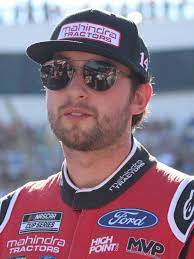
PHOENIX – It was a tale of two races for Chase Briscoe last Sunday at Las Vegas Motor Speedway. The driver of the No. 14 Mahindra Tractors Ford Mustang Dark Horse for Stewart-Haas Racing was a top-10 mainstay for the first half of the Las Vegas 400, but after midrace contact with the Ford of Ryan Blaney, Briscoe’s Mustang became a handful.
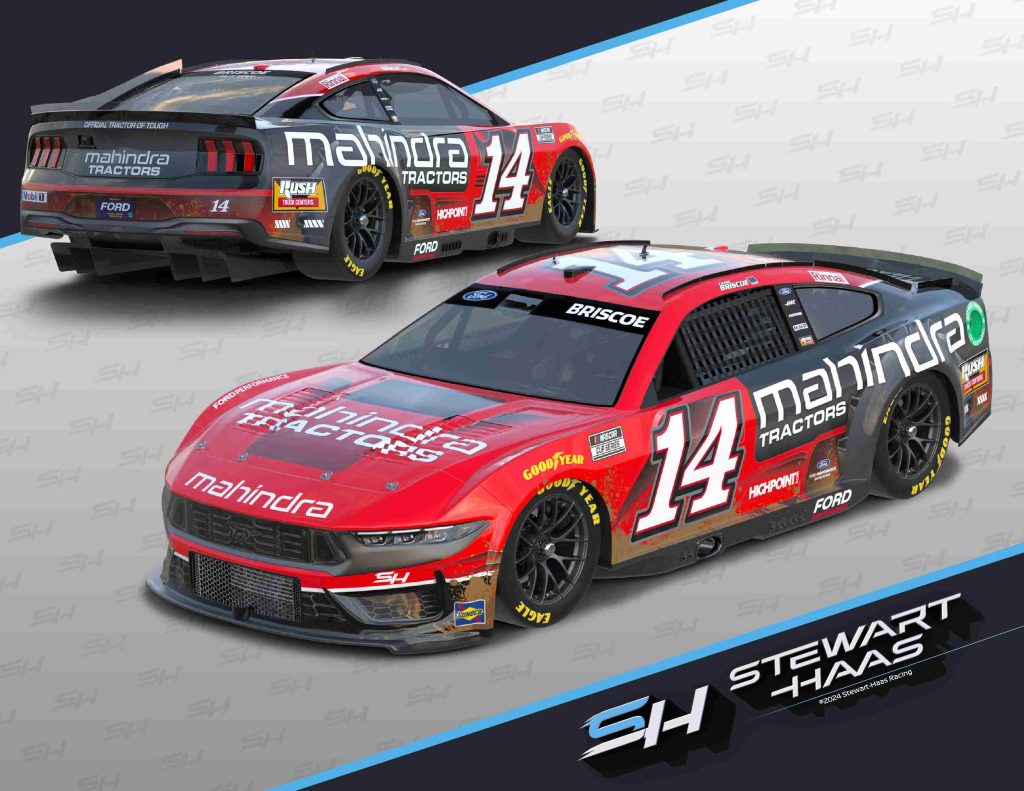
With lap times suddenly a half-second slower, Briscoe went from contention to contraction. After leading the 37-car field on lap 16 and staying tight with the other frontrunners, Briscoe finished the 267-lap race a distant 21st. The silver lining was that the 1.5-mile Las Vegas oval was the first litmus test of the 2024 season where teams could see where they stacked up with one another. Briscoe’s pace at the race’s onset combined with the sixth-place finish of teammate Noah Gragson proved Stewart-Haas is pointed in the right direction.
The Shriners Children’s 500k this Sunday at Phoenix Raceway will mark Briscoe’s seventh career NASCAR Cup Series start at the 1-mile oval. He is batting .500 at the track for top-10s with three finishes of seventh or better. However, those runs are juxtaposed by three other results outside the top 20.

Briscoe’s best result at Phoenix is the best – a victory, and it wasn’t just any victory. In his 40th career NASCAR Cup Series start and just his third at Phoenix, Briscoe held off Tyler Reddick, Ross Chastain, and the all-time winningest driver in NASCAR history at Phoenix, Kevin Harvick, to win his first Cup Series race. Briscoe had earned the right to fight for the win even before some late-race teeth-gnashing brought on by a green-white-checkered finish. Briscoe started sixth and led three times for 101 laps before taking the checkered flag with a .771-second margin over runner-up Chastain. In addition to the triumph being Briscoe’s maiden Cup Series win, the native of Mitchell, Indiana, also became the 200th different race winner in Cup Series history.
When Briscoe scored his first NASCAR Cup Series win at Phoenix on March 13, 2022, he became just the third driver to win his first race at Phoenix, joining NASCAR Hall of Famer Alan Kulwicki (1988) and Bobby Hamilton (1996).
“It was obviously a super special day and one that I’ll certainly never forget,” said Briscoe. “I remember truthfully going there that weekend not super excited. Phoenix had never been a track that I necessarily looked forward to going to. I looked at it as one of my three worst racetracks. I remember going there that weekend trying to be optimistic, but kind of knowing it could potentially be a weekend of struggle. I put a ton of work into trying to get better at Phoenix, but I still felt I had a long way to go. I remember practicing and qualifying and being extremely happy with my car and I felt like Sunday I definitely was going to be in the mix as far as a top-five goes. I didn’t necessarily feel like I had winning speed, but felt I had a car capable of being up front. I was able to slowly creep our way forward all day until we found ourselves in the lead, and I just remember it not being an easy one to seal the deal. I had to hold off Chase Elliott for like 60, 70 laps, and our pit crew did an amazing job keeping us out front, and they actually got me the lead again on pit road. I remember having a restart with, I want to say 18 or so to go, and starting on the front row with Kevin Harvick at Phoenix going for the win, which was really cool to go heads-up against not only my teammate, but also a guy who had done it all there. It was just a really cool day, and I felt like I definitely had to go and earn it. I think we had a restart with four or five to go, too, and it was me and Ross Chastain and Tyler Reddick and we were all going for our first win at the time. It was a really hard one to win and one of those races where you really had to keep your elbows up and just a really cool day overall.”
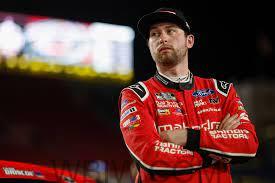
One moment stood out that day.
“One thing would be just having my dad there, just him coming up to me and telling me how proud he was and just seeing how much it meant to him,’ added Briscoe. “Obviously, it meant a ton to me, but he’s been there from the beginning and knows all the sacrifices and knows all the things we did to get to that point. To be able to share that moment with him was really special. He was the only family I had out there that weekend, so I was glad that I had somebody to experience that moment with.”
With 109 different drivers having piloted a No. 14 car in the NASCAR Cup Series’ 76-year history, only one has won with the No. 14 at Phoenix. Briscoe’s Phoenix win is the only Cup Series victory by a driver of the No. 14, an incredible feat when looking at some of the past wheelmen of the No. 14, which includes Tony Stewart, Clint Bowyer, A.J. Foyt, Terry Labonte, Fonty Flock, Jim Paschal, Hershel McGriff, and Bobby Allison. Stewart, Labonte McGriff, and Allison are all NASCAR Hall of Famers.
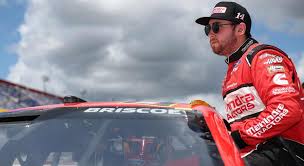
“I would say I didn’t realize, truthfully, how big of a deal it was to other people,’ said Briscoe. “I knew it was going to be a big thing that I always wanted to do, but when it comes to me, after I did it, it was cool to check that box, but I was just ready to go on to the next one. It was kind of like business as usual. I remember getting home that night, the first thing I had to do the next morning was take the trash out. Nothing had changed just because I won a Cup race. But I would say I never knew how much it would mean to other people. After the fact, I had tons of text messages and a couple of people actually took videos of themselves watching the race, some people were crying. And the number of team owners that I had driven for in the past, and to see how much it meant to them, that’s when I think it opened my eyes to how big of a deal it really was. When you think of the Cup Series, when we were able to win that race, I was the 200th winner in Cup Series history, so when you think of all the people who have actually attempted a race, and then to be able to be on a very unique list of only 200 drivers to be able to say they had won a Cup race was really special. Yeah, I kind of wish I would’ve savored it a little bit more, but at the same time you’re only as good as your last race in this sport, so you try to move on to the next one and try to duplicate it as best you can.”
On his way to the NASCAR Cup Series, Briscoe spent two full seasons in the NASCAR Xfinity Series. From 2019 through 2020, Briscoe made four Xfinity Series starts at Phoenix and never finished outside the top 10. His best result was sixth, earned twice – in his first Xfinity Series race at Phoenix in March 2019 and his third Xfinity Series start at the track one year later.
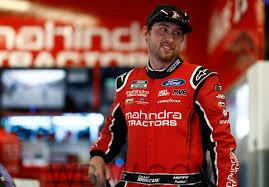
“There’s definitely confidence that came along with the win, but there’s also a sigh of relief,’ added Briscoe. “Your whole life growing up you dream of getting to be a Cup racer, you want to win at the highest level, getting your name added to the guys on that list. Any time you move up in a series, there’s obviously this huge learning curve that comes with that, and I feel like every racecar driver at some point questions themselves every time they move up in the ranks. Am I capable of this? Am I going to be able to win at this level? So to be able to win at this level was definitely a sigh of relief but, at the same time, it definitely adds pressure in the sense that it turns into an expectation when you can show you can win, especially at a non-restrictor-plate type of racetrack. If you can win at one of those types of racetracks, you’re expected to be able to win anywhere. It’s a sense of some relief just being able to check that box, but it certainly adds to the pressure of wanting to check a lot more boxes.”
In his lone NASCAR Craftsman Truck Series start at Phoenix in November 2017, Briscoe was strong and consistent, qualifying eighth and finishing fourth.
Three top-10s in six career NASCAR Cup Series starts at Phoenix, but in those other three starts, we’re looking at finishes all outside the top-20. What makes Phoenix a seemingly feast or famine track for you?
“Some of it goes back to my feeling that it was always one of those tracks where I’ve always struggled at, even though I’ve been able to win there,’ said Briscoe. “I feel like when our car’s really good, I’ve always been able to be up in the mix, but when our car is off, I feel like I’ve struggled to find the speed and where to make speed. I definitely feel like my race team has carried me to a certain extent every time we’ve gone to Phoenix and had those good runs. They’ve done a really good job of bringing a really good package there. I definitely still have a lot to learn when it comes to Phoenix, just trying to make my car do things that it doesn’t necessarily want to do. I think some of the results go along with the racetrack. They’ve been able to spray the resin down, and the top lane kind of comes in at times, and I feel like anytime the top lane has been good at Phoenix, I’ve been up in the mix, but when it hasn’t been on the top, I’ve kind of struggled. So I feel like that’s where a lot of the feast or famine comes from.”
How different is the Cup car at Phoenix compared to the Xfinity Series car there, and were there any takeaways that you were able to apply when you got in the Cup car?

“I really don’t feel like anything in the Xfinity car applied,’ said Briscoe. “Today, we’re downshifting, and along with the braking, everything is totally different. There’s not a whole lot you can take from it, and the whole start of my career at Phoenix was truly a struggle. Even though we had run in the top 10, we were never really in the mix to win races.”
There’s a new rules package at Phoenix – a simplified rear diffuser and a higher rear spoiler. What do you know about it and what are your expectations with it?
“I don’t know a whole lot about it as far as what it’s going to be like,’ said Briscoe. “Fortunately, we’re going to get a full practice session on Friday, so that’ll be nice to kind of go through some things and try to see where it’s all different and what it does. I certainly think this package on paper is going to put a lot more in the driver’s hands. We should be slipping and sliding around a lot more. I think it’s going to be easier to pass guys, you’re going to see a lot more comers and goers. From a racing standpoint on the short tracks, I definitely think it’s going to make it better. So that’s exciting to think about. Any time the drivers can get more things put in their hands, they like that. I’m looking forward to it. We’ve had a pretty good package there in the past. We’re going to change that package, so that’s a little concerning, kind of knowing that we’ve always been pretty good there. Just trying to understand how all that’s going to apply. There’s lot of moving targets and variables, but it’s still a racecar and you’ve still got to get it around the racetrack as fast as you can, so that’s what we’ll have to do.”
Restarts at Phoenix can be a little crazy. How crazy are they, and when is it smart to cut through the dogleg and when is it a riskier proposition?
“The restarts at Phoenix are certainly unlike anywhere else we go. There’s really no other racetrack where you hear six-, seven-wide, sometimes, on the radio. It is a challenge. It seems the more aggressive you can be, the better, but there is that risk versus reward at the same time. Phoenix is a very interesting track as you go from the front straightaway where we do the restarts to where you could run 30-wide if you wanted to, and then you kind of funnel into the exit of turn two where it’s barely three-wide. There is a lot of give and take, but it’s one of those places where, anymore, you have to always cut the dogleg every restart – not necessarily at the start of the race – but you’ll see guys doing it because it’s definitely turned into an advantage doing it. It’s always relative to where you’re at in the field, whether you’re in the inside or outside lane, but you definitely will be cutting the dogleg on every restart.”
You cut through the dogleg and you’re carrying a bunch of speed – what do you need to do to get slowed down enough to make that first corner, which just got a whole lot tighter because you cut the corner – and how do you merge into traffic with those who stayed on the track and arced their way into turn one?
“It’s very complicated,” said Briscoe. “There’s a lot going on at once. There are so many different things that are going on – if you’re in the bottom lane, you’re trying not to run into the guy in front of you. In (turns) one and two, it does give you the option, you can run down on the apron, but by the exit of turn two, the pit wall starts so you’ve got to be up on the racetrack. It’s chaos, truthfully, every time we go there, and especially if you have a late-race restart, there are just guys all over the place and you’re just trying to find a lane where you can find some clean air. I always kind of enjoy being on the top a little bit more, but it seems like the farther back you are, the bottom’s a little bit better. It’s just a hard place because there are so many things that can happen. One guy can have a bad corner or mess up and then all of a sudden that whole lane gets backed up. So there’s a lot that has to go your way and a lot that obviously can go wrong, and you just hope you’re on the good end of it.”
Las Vegas is a litmus test in terms of where teams stack up with one another. Is that the case for Phoenix as well, at least in terms of how your short-track package stacks up, and is there an element of urgency because Richmond and Martinsville are only two and three weeks away, respectively?
“For sure there’s some of that. I think that your Martinsville stuff may not necessarily be bad if you’re bad at Phoenix or good if you’re good at Phoenix because they are so different,’ added Briscoe. “And Richmond is so much more a tire fall-off situation. So I would say there will be some cars that are better than others when we go to Phoenix, just with it being a new package and everybody’s still trying to learn it, but I don’t think it’s going to be an end-all, be-all if you’re not good at Phoenix. The racetracks coming up from a short-track standpoint are so drastically different than what we have at Phoenix. It’s hard to say until we go out there and do it, but hopefully for our sake we can be good. If you can go out there and be good in practice and good in qualifying, it’s certainly going to make your race a whole lot better.”
Mahindra Ag North America is in its third year as the anchor sponsor for Briscoe and the No. 14 team after extending its partnership with Stewart-Haas during the offseason. The multiyear agreement with the NASCAR team co-owned by NASCAR Hall of Famer Tony Stewart and industrialist Gene Haas continues to feature Mahindra Tractors, a brand of Mahindra Ag North America, on Briscoe’s No. 14 Ford Mustang for the majority of the NASCAR Cup Series schedule. Houston-based Mahindra Ag North America is part of Mahindra Group’s Automotive and Farm Sector, the No. 1 selling farm tractor company in the world, based on volumes across all company brands. Mahindra offers a range of tractor models from 20-75 horsepower, implements, and the ROXOR heavy-duty UTV. Mahindra farm equipment is engineered to be easy to operate by first-time tractor or side-by-side owners and heavy duty to tackle the tough jobs of rural living, farming and ranching. Steel-framed Mahindra Tractors and side-by-sides are ideal for customers who demand performance, reliability and comfort. Mahindra dealers are independent, family-owned businesses located throughout the U.S. and Canada.


